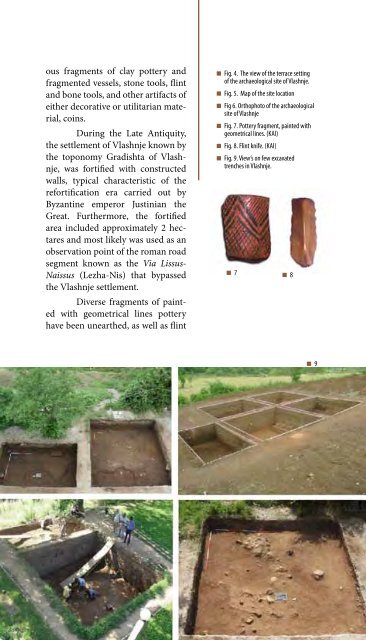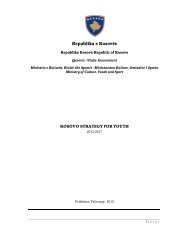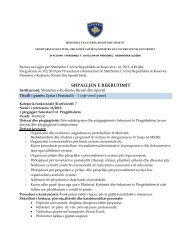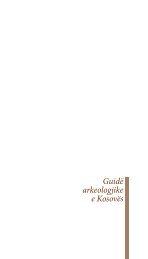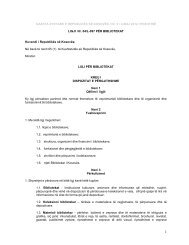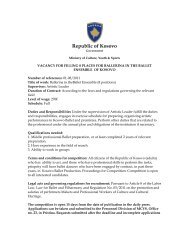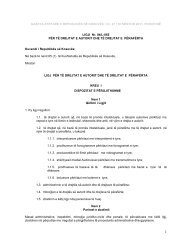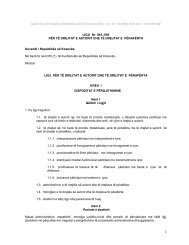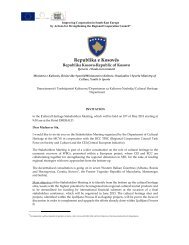Archaeological Guide of Kosovo
Archaeological Guide of Kosovo
Archaeological Guide of Kosovo
Create successful ePaper yourself
Turn your PDF publications into a flip-book with our unique Google optimized e-Paper software.
ous fragments <strong>of</strong> clay pottery and<br />
fragmented vessels, stone tools, flint<br />
and bone tools, and other artifacts <strong>of</strong><br />
either decorative or utilitarian material,<br />
coins.<br />
During the Late Antiquity,<br />
the settlement <strong>of</strong> Vlashnje known by<br />
the toponomy Gradishta <strong>of</strong> Vlashnje,<br />
was fortified with constructed<br />
walls, typical characteristic <strong>of</strong> the<br />
refortification era carried out by<br />
Byzantine emperor Justinian the<br />
Great. Furthermore, the fortified<br />
area included approximately 2 hectares<br />
and most likely was used as an<br />
observation point <strong>of</strong> the roman road<br />
segment known as the Via Lissus-<br />
Naissus (Lezha-Nis) that bypassed<br />
the Vlashnje settlement.<br />
Diverse fragments <strong>of</strong> painted<br />
with geometrical lines pottery<br />
have been unearthed, as well as flint<br />
Fig. 4. The view <strong>of</strong> the terrace setting<br />
<strong>of</strong> the archaeological site <strong>of</strong> Vlashnje.<br />
Fig. 5. Map <strong>of</strong> the site location<br />
Fig 6. Orthophoto <strong>of</strong> the archaeological<br />
site <strong>of</strong> Vlashnje<br />
Fig. 7. Pottery fragment, painted with<br />
geometrical lines. (KAI)<br />
Fig. 8. Flint knife. (KAI)<br />
Fig. 9. View’s on few excavated<br />
trenches in Vlashnje.<br />
7<br />
8<br />
9<br />
14 <strong>Archaeological</strong> <strong>Guide</strong> <strong>of</strong> <strong>Kosovo</strong>


